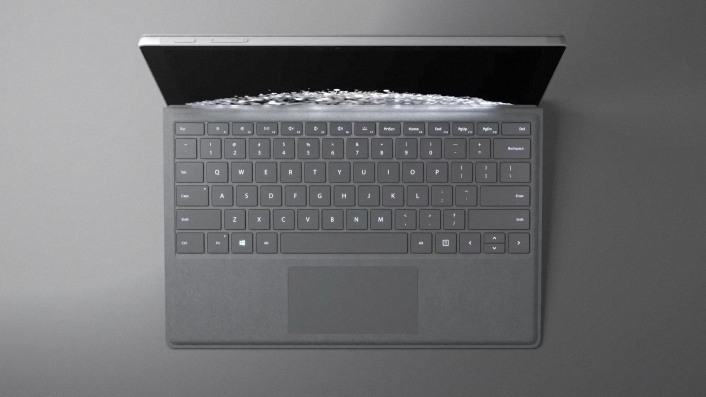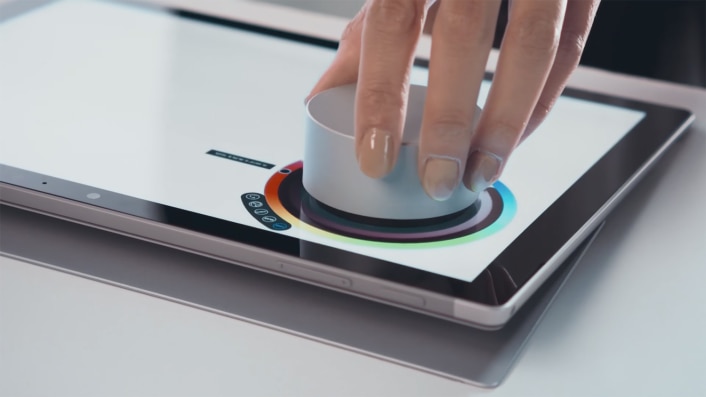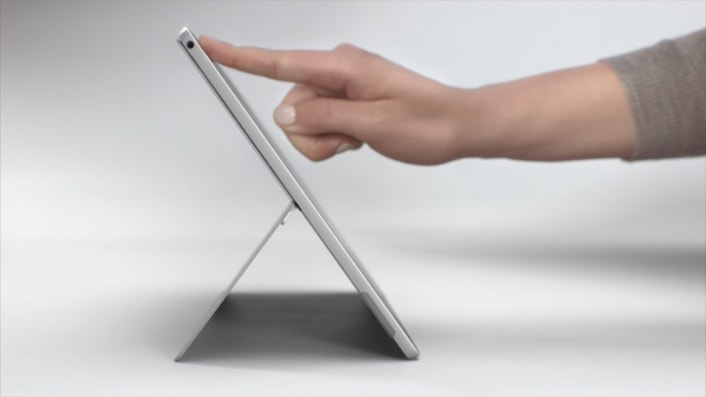Is Microsoft’s New Surface Pro Ho-Hum? Nope, Just Mature Technology
Slightly less than a half-decade ago, Microsoft made one the most memorable announcements in its history: For the first time, it would design and sell its own PCs, in the form of a new line of Windows tablets known as Surface. And then, for the next few years, the company ignored the skeptics–who were legion–and not only stuck with the Surface, but used it as a tapestry for experimentation.
The company tried different screen sizes until it settled on the current 12.3.” It attempted—twice–to introduce a lower-cost, non-Pro incarnation of the Surface idea. It took signature Surface design elements like the hinged kickstand and svelte keyboard cover and refined them repeatedly in ways that were instantly noticeable. It identified design weaknesses, such as the wimpy magnetic power connector and dinky trackpad, and fixed them.
But the Surface Pro 4, which was introduced in October 2015, has been on the market for a long time by gadget standards. Earlier this month, Surface honcho Panos Panay told Cnet‘s Dan Ackerman that Microsoft would only release a Surface Pro 5 device “when it’s meaningful and the change is right.” That led some folks to conclude that no successor to the Surface Pro 4 was imminent.

However, at a Surface event held in Shanghai today, Microsoft’s big announcement was a new Surface Pro. In fact, that’s what the company is calling it: the new Surface Pro, without a model number. (Apple has been known to take a similar branding approach with iPads, including the new $329 model.)
The new Surface Pro doesn’t reflect a fundamental rethink of the Surface Pro 4. But neither is it the sort of thing that tech nerds call a “speed bump”–the same old model in the same old case with a slightly faster processor. Actually, there’s quite a bit that’s new:
- A new configuration with an Intel Core M3 processor emphasizes power efficiency over raw performance, offering up to 13.5 hours of battery life. Both the M3 and Core i5 versions of the device sport fanless designs, making them the first silent Surfaces.
- Microsoft will offer models with built-in LTE connectivity–finally matching one of the things I like most about my iPad Pro.
- The Surface Pen now has 4,096 levels of sensitivity (quadruple the previous number), lays down digital ink with less lag time, and, like Apple’s Pencil, lets you lay down shading by drawing with side of its tip.
- The pen has also lost its clip and is a $100 extra-cost option–just like Apple’s Pencil–rather than being bundled in the box.
- You can fold back the kickstand until the Surface lies at an angle that makes it feel like a drawing table–sort of a miniature version of the jumbo-sized Surface Studio desktop PC.
- The Type Cover, which is already much better than Apple’s Smart Keyboard for the iPad, has added even more travel to its keys.
- The tablet’s industrial design, while in no way a departure from previous models, is a bit curvier.
One thing you might have expected the new Surface Pro to change remains the same: its approach to ports. It still has full-sized USB ones and a proprietary power connector rather than the more versatile USB-C. That design decision–which Microsoft also made for its new Surface Laptop–reflects caution rather than a bold willingness to dump aging features. But it’s also defensible. Especially given that a lot of Surface Pro owners use it for pro-caliber purposes such as design work–a group that tends to include people who prefer proven technologies over new standards and the need to futz with adapters.
When it comes to holding flashy media events–and pleasing the Twittersphere–incremental improvements of the sort seen in the new Surface Pro may be too subtle to inspire wild applause. But if this new model closely resembles the Surface Pro 4 in most respects that matter, it doesn’t strike me as a failure of imagination on Microsoft’s part. It’s just that the decisions the company made over multiple previous upgrades have resulted in a machine that doesn’t require reimagining at the moment.
Which is not to suggest that it’s impossible to substantially improve the experience it offers. It’s just that the most obviously fertile ground may be software-based improvements rather than hardware ones. Even after five years, the Surface Pro’s combination of tablet, detachable keyboard, and pen is a new idea that cries out for software designed with it in mind.
Indeed, Microsoft has been busy on that front. It’s previewing a new app called Microsoft Whiteboard designed to let multiple people write and sketch on a shared blank slate. And when I met with Microsoft executives last week to get a sneak peek at the new Surface Pro, they devoted as much time to showing how Office leverages it–with features like a fancy set of drawing tools availabile across Word, Excel, and PowerPoint–as they did talking about the hardware.
It’s entirely possible that the next new Surface Pro after the new Surface Pro will aim for great leaps forward. In his Cnet interview, Panay made reference to a theoretical “Surface Pro Next” that sounds like it might be such a device. For now, though, the new Surface Pro’s emphasis on sensible refinements is a sign that Microsoft has come closer to fulfilling the goals that Panay, former CEO Steve Ballmer, and former Windows chief Steven Sinofsky detailed on stage at the original Surface’s June 2012 launch event in Los Angeles than most people would have guessed. Including me.
For years, Microsoft made big, frequent changes to its tablet. The fact that its pace has slowed is a sign of success that many would not have predicted.
Slightly less than a half-decade ago, Microsoft made one the most memorable announcements in its history: For the first time, it would design and sell its own PCs, in the form of a new line of Windows tablets known as Surface. And then, for the next few years, the company ignored the skeptics–who were legion–and not only stuck with the Surface, but used it as a tapestry for experimentation.





Fast Company , Read Full Story
(29)









